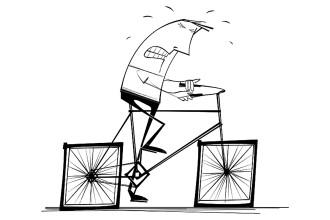
If Nepal continues to treat sports as a side show, it will keep producing isolated heroes rather than a generation of professional athletes. But if it learns from its victories, reforms its governance and embraces the sports economy as a part of its growth strategy, it can achieve something far more lasting than medals or headlines.
Nepal’s triumph in the T20I series against the formidable West Indies in late September 2025 brought immense joy to sports enthusiasts and the general public across the nation, particularly amidst the gloomy Dashain weather and a prevailing sense of fear and uncertainty following the momentous youth-led protest earlier that month.
Decades ago, Nepal experienced similar highs in sporting accomplishments: in 1984 and again in 1993, the men’s national football team claimed the gold medal at the South Asian Games becoming the regional football champions. Beyond football and cricket, individual athletes have time and again achieved remarkable success in international competitions in swimming, marathon, martial arts, trail running and mountain biking.
Notably, Nepali women are also making significant strides in team sports like football, cricket and volleyball, as well as in individual sports. Potential of Nepali athletes to compete on the international stage is well established. More significantly, the growth in popularity of sports in general is overwhelmingly positive.
Ironically however, the majority of our sporting success have been achieved despite the country’s inadequate infrastructure which in turn is a direct result of the authorities’ negligence, corruption and apparent lack of comprehension regarding the significance of sports as an important driver of the economy.
Nepal’s Sports Governance
At the heart of Nepal’s sports structure lies the National Sports Council (NSC), the government body mandated to coordinate and regulate the sports associations and athletic programmes. Under its umbrella operate dozens of national federations, such as All Nepal Football Association (ANFA), Cricket Association of Nepal (CAN), Nepal Volleyball Association, and several others for individual and team sports. In theory, the NSC is meant to be the apex body for policy, funding and infrastructure. However, in practice, it has struggled with overlapping mandates, political interference and weak governance.
ANFA governs football through its own constitution and affiliations with the Asian Football Confederation and FIFA. It manages national teams, domestic leagues and youth football programmes. Its annual budget of around Rs 1.56 billion for 2025/26 reflects the scale of football’s ambition. Yet even with this funding, the fortunes of men’s football team have stagnated since its golden years. The women’s team continues to battle for recognition and equitable support even though they consistently do well in the SAFF Championship.
CAN, on the other hand, has witnessed a turnaround. After years of suspension by the International Cricket Council for governance failures, it regained recognition and has since capitalised on the cricketing boom. The Nepal Premier League (NPL) now draws decent private investment, with each franchise reportedly investing around Rs 100 million. The domestic games attract capacity crowds and television viewership is soaring.
Overall, though, the governing structures remain riddled with systemic flaws. Leadership positions are often politically influenced. Transparency in financial management is weak with a history of grant misuse. Most federations operate on donor grants or annual government subventions, leaving them vulnerable to the volatility of bureaucratic priorities. Infrastructure is concentrated mostly in Kathmandu and Pokhara and rural provinces remain neglected. Such institutional fragility means Nepal’s sports ecosystem is built on raw talent and passion of individual athletes rather than policy and management. It produces heroes but no systems. We get moments of celebrations, but a momentum never gets built.
The Economics of Play
Reliable precise data on the size of Nepal’s sports economy are not available. So, I’m drawing a realistic picture here from available estimates. The government’s annual allocation to youth and sports for this year is just over Rs 6 billion. Add to that the budgets of federations such as ANFA and CAN and the private investments flowing into franchise leagues and sponsorships, and one can reasonably arrive at a back of the envelope estimate of roughly $50 million as the formal sports sector spending to be at. This figure excludes the vast informal and spillover economy linked to sports. Every match draws vendors, transport operators, tourism, hospitality, merchandising activity, etc. The sports economy thus could already be worth $100 to $150 million annually. With structural reforms, better commercialisation and robust governance, my balcony perspective is that it could easily grow to $500 million in the next few years.
More importantly, the employment impact could be equally significant. Sports create direct jobs for athletes, coaches, physiotherapists, event managers, ground staff and journalists, as well as indirect employment across hospitality, logistics and small businesses. At a time when youth unemployment in Nepal hovers around 20%, the sports sector offers a non-traditional but viable avenue for livelihood generation. In a country where far too many young people see migration as their only option, sports could offer both dignity and opportunity at home.
Private Sector Appetite
It is encouraging to note that the private sector has begun to sense opportunity. The Nepal Premier League has attracted serious investors, while the Nepal Super League in football has built a small franchise ecosystem. Corporates are sponsoring tournaments. Privately owned and managed futsal courts have mushroomed across urban Nepal. These developments show that the demand and willingness to invest exist.
However, while the private sector is ready to put money on the table, the government’s role as an enabler remains underdeveloped. Sports policy, like many other sectors in Nepal, suffers from fragmentation across federal, provincial and local jurisdictions. Projects stall in procedural limbo while bureaucrats treat sports as a cultural afterthought rather than a strategic growth sector. If the government were to make public land available for stadiums, golf courses and sports infrastructure, provide modest fiscal incentives and ensure regulatory stability, the private sector could drive much of the sector’s growth. The state doesn’t need to do everything; it just has to stop getting in the way.
Lessons from Abroad
The global sports economy offers compelling examples of how structured investment and governance can turn games into gold. The English Premier League contributes nearly £8 billion annually to the UK economy through broadcast rights, tourism and merchandise. The Indian Premier League generates upwards of $1.5 billion each year, powering a vast ecosystem of employment, media and urban consumption. Even smaller nations have successfully turned niche sports into exportable brands, for example, Croatia with football, Jamaica with sprinting, Kenya with distance running.
Obviously, Nepal cannot replicate these models wholesale. Its economy and market size are vastly smaller. But the lesson is clear: with transparency, professionalism and clear rules of the game, sports can become a serious economic driver. It is a sector where small investments yield disproportionately high social dividends like national pride, social cohesion and healthier youth in addition to generating sustainable local economic activities. Every new futsal court, cricket ground or league event becomes both an athletic and economic enterprise, creating work and community engagement simultaneously.
The Big Picture View
Ultimately, the sports ecosystem’s weaknesses are not unique. They mirror the broader ailments of Nepali governance. Politics has seeped into every sector, from education to capital markets to sports. Leadership is often transactional. Institutions are captured by networks of loyalty rather than competence. This explains why Nepal remains an underachieving state despite being a country of extraordinary individual achievers. Oh, how all of us are eagerly awaiting a transformational leadership!
Sports offer more than entertainment. They offer a mirror and a metaphor. The same ingredients that make a winning team, i.e., discipline, meritocracy, teamwork, clear rules, accountability are precisely what Nepal’s public life lacks. Reforming the sports to my mind is a low hanging fruit as much of Nepal’s youth would be invested in it. The sector could actually serve as a prototype for reforming governance itself.
Nepal’s recent cricket victory over the West Indies should be remembered not just as a proud day on the field but as a wake-up call. It proves that when given a fighting chance, Nepalis can compete and win at the global level.
If Nepal continues to treat sports as a side show, it will keep producing isolated heroes rather than a generation of professional athletes. But if it learns from its victories, reforms its governance and embraces the sports economy as a part of its growth strategy, it can achieve something far more lasting than medals or headlines. It can build a future where talent meets economic opportunity at home. Sports can undoubtedly be a force to keep our youth positively and economically engaged and united under the Rato Ra Chandra Surya.
Nepal’s young people are eager. The private sector is willing. The fans have always been ready. Will the state play ball?






